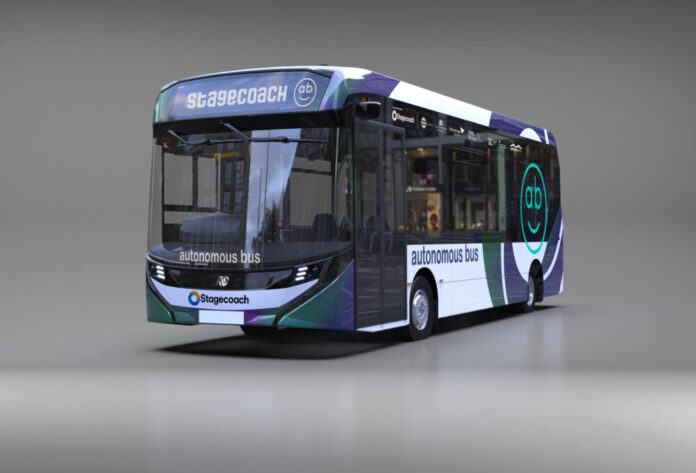
CAVstar gets green lights
Scotland’s first intelligent bus has said it’s just around the corner. The connected cyborg is destined to take passengers from Edinburgh to Dunfermline City Centre and there are signs indicating that passengers have only got a couple of years to wait. The advanced communications skills of the connected bus have been critical in elevating it to Level 4 on the autonomous driving scale. The robo route master, CAVStar, uses data from a suite of sensors including cameras, LiDAR and Radar whose input is processed by artificial intelligence to steer the bus with maximum safety and efficiency in all traffic and weather conditions. The system can even talk to traffic lights and get them to hold them on green, so the bus can sail safely through one junction after another.
Fusion Processing, one of the developers of the bus, said its quest to build a CAVStar automated driving system is now in its second phase. The new CAVForth 2 phase is a £10.4 million-expansion of a public and private project that adds five miles onto the existing Edinburgh-Fife journey codified in CAVForth 1, extending the route into Dunfermline city centre. The complex driving conditions and traffic flows found in urban areas will enable further testing and development of the buses’ Level 4 autonomous driving capability along the 19-mile route.
The machines intelligence drives the bus with minimal braking and accelerating for a smoother, more comfortable ride with fewer injuries to passengers, less wear on the brakes and lower transmissions. Even well-trained bus drivers can push up fuel consumption by a fifth as a result of their driving style. This variance across a fleet of buses can raise operating costs, emissions and environmental impact. Another problem it solves is that dust from brakes and tyres is now included in EU emissions regulations for the first time as part of the Proposals for Euro VII. This strengthen the case for autonomous vehicles on public transport networks in order to improve air quality, especially in cities.
“The government funding we can build further on this achievement by advancing the technology as we extend our Scottish bus service to cover a longer route,” said Carla Stockton-Jones, UK Managing Director of Stagecoach, one of the partners in the project.
The project aims to prove how autonomous buses can improve journey times and quality of service for customers while also reducing energy consumption and emissions. Consortium-led Fusion Processing’s CAVStar Automated Driving technology will be fitted to a fully-electric Enviro100AEV bus from consortium partner Alexander Dennis. This will join the existing test fleet of five Enviro200AV diesel buses, which are capable of carrying over 10,000 passengers a week.
Though a human driver is not needed behind the wheel there will be specially-trained safety drivers on board to monitor the vehicles’ autonomous systems, together with a bus ‘Captain’ who walks the passenger deck, assisting customers and answering questions. Jim Hutchinson, CEO, Fusion Processing, said: “We have every confidence that a range of Radar, LiDAR and optical sensors with artificial intelligence will be up to the task.”
CAVForth2 is funded by the UK government’s Centre for Connected and Autonomous Vehicles (CCAV) and project partners Fusion Processing Ltd, Alexander Dennis, Stagecoach, Transport Scotland, Edinburgh Napier University and Bristol Robotics Laboratory, UWE. Alexander Dennis’s Head of Concepts and Advanced Engineering, Jamie Wilson, said: “Our new Enviro100AEV will demonstrate another use case for our extremely versatile next-generation electric bus as Alexander Dennis continues to lead the transition to zero-emission mobility.”


